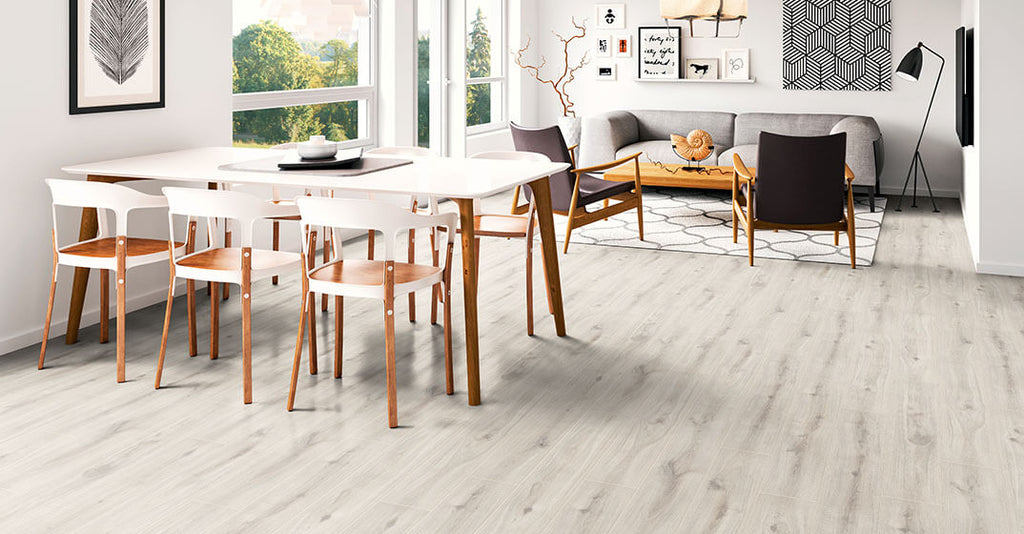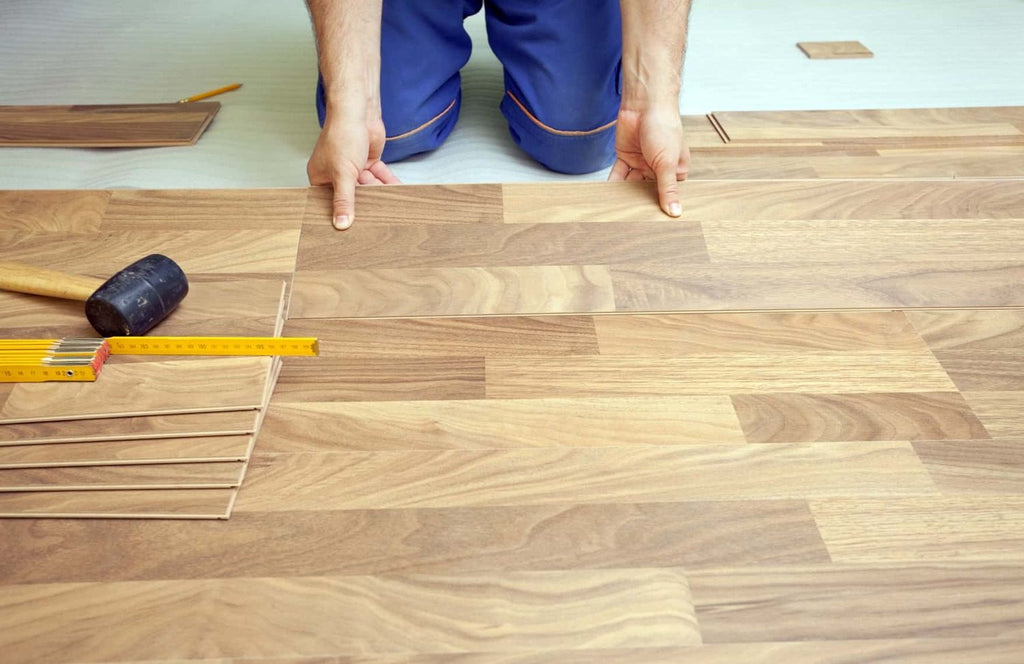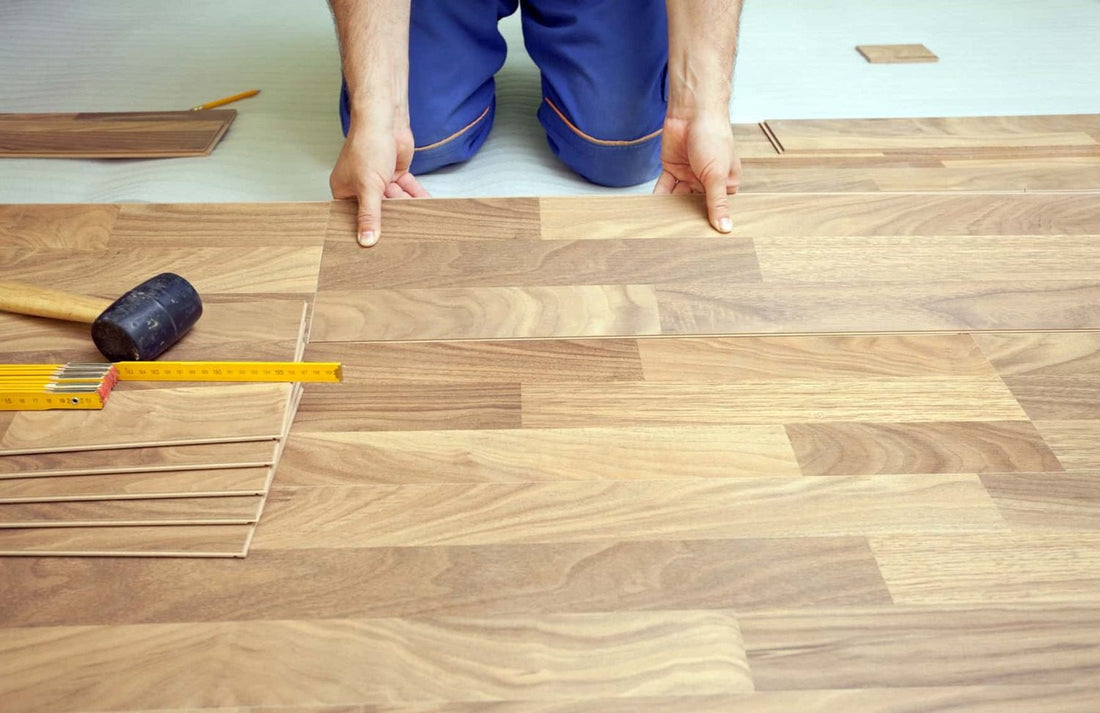A DIY floor installation project can be completed successfully and securely. However, the success of DIY floor installation depends on several factors. For those who prefer to install their flooring on their own, continue reading to discover our tips for a successful DIY floor installation project. This article will guide you on how to install your flooring products and help you with the materials and equipment you need for your DIY floor installation.
What Type of DIY Floor Installation Will You Do?

If you decide to replace your flooring with tile, hardwood, carpet, or another type of flooring, you'll have to think about several factors, including the type of material, the size of the space, and several other factors.
Selecting the right colour and style of flooring for your space is an important step that is often overlooked. The first thing you need to consider for your DIY flooring installation is the performance and the traffic. Is this floor intended for your home or office? Is it a high-traffic area with a large number of people? Do you have pets? In which room will it be installed? After that, you'll want to ensure your furniture, décor, and walls complement your flooring choice and that you won't need to change it.
Gather Your Materials and Equipment For DIY Flooring Installation
Before you begin your DIY floor installation, you will need to gather your materials and equipment. When you want to ensure that your floor is secure and will last for a long time, you must follow the correct procedures, which begin with having the right tools. The equipment required for this project can be purchased or rented from your local hardware store.
For your DIY floor installation, you'll need some or most of the following tools and equipment:
- Flooring installation kit (including spacers and a tapping block)
- Laminate cutter
- Carpenter’s square
- Jamb saw
- Circular saw or table saw
- Utility knife
- Level
- Hammer
- Tape measure
- Clamps
- Pencil
- Underlayment
- Vapor barrier
- Nail gun
- Duct tape
- Caulk
- Finishing nails
It is also necessary that you select and order your flooring products. A number of flooring manufacturers have design specialists who are able to assist you in choosing the best design and amount of materials for your home. Lastly, wear safety equipment such as goggles, gloves, and knee pads while completing your DIY flooring installation project to ensure your safety.
DIY Floor Installation Tips

If you are considering installing your own flooring, it can be a rewarding experience and can save you some money, but you must understand the basics of DIY floor installation before you begin. The following tips will help you in the flooring installation process.
1. Choose The Right Flooring
It’s important to choose a flooring material that is appropriate for your space. Consider the room’s condition, traffic level, and desired aesthetic. For example, a durable hardwood or tile may be better suited for a high-traffic area than softer materials like cork or carpet.
2. Trim Door Jambs
If you are installing flooring around a door, it may be easier to cut down some of the trim around the doorway as opposed to cutting your flooring material to fit an irregular shape. By trimming some wood from the bottom of the trim, your flooring will fit seamlessly underneath.
Line up a piece of flooring against the door frame after you place your underlayment. Mark the point at which the top of the flooring plank meets the frame with a pencil. This will help you determine where to cut. You must then remove the small piece of wood using a jamb saw. Your flooring should slide smoothly into the small gap when you are installing it.
3. Prepare The Space
Ensure that the subfloor is clean and level before you start. Since the flooring material will be laid on top of the subfloor, any irregularities in the subfloor could cause problems. You may need to fill in cracks or gaps and sand down high spots before you begin.
You will then need to prepare the subfloor. Clean and smooth subfloors are the best conditions for installing flooring. It is possible to install laminate over old floor coverings like sheet vinyl as long as the old covering is flat, smooth, and not too soft. In most cases, you'll need to remove the existing flooring, along with baseboards and trim.
Remove any debris by sweeping or vacuuming, then make sure the ground floor is level. If there are any chips in the concrete basement flooring, patch them up using a patching compound. If your subfloor is made of wood, make sure that loose nails are removed, cracks are patched, and uneven areas are sanded. Before covering any planks, you may want to replace any that are damaged.
4. Measure And Cut The Material
Accurate measurements are essential for a successful floor installation. Measure the space carefully before you cut the flooring material, and take into account any doorways or other obstacles. It’s also important to account for the expansion gap that should be left around the perimeter of the room.
5. Install The Material
Depending on the type of material you are working with, you may need to use a specific adhesive or other tools to install the flooring. Read and follow the manufacturer’s instructions for the best results.
Before you begin installing a wall, you must decide which wall to start with. It's a good idea to begin installing flooring against the longest wall. If your room has a fireplace or large windows, you may want to lay your flooring parallel to that wall if there is a major focal point.
6. Finish The DIY Floor Installation
Once you have installed the flooring, it’s important to finish the edges and corners properly. You may need to use a special edge trim or molding to cover any gaps. You should remove the spacers from your walls once you have finished installing your floors. You need to install thresholds on the doors and baseboards around the room. To make the baseboard look smooth and finished, caulk the edges.
Benefits of DIY Floor Installation

Budget is usually the main reason why people opt for DIY flooring installations. Professional installation typically costs more in labor than in materials, so you might consider doing the installation yourself. The following are some reasons why DIY flooring is a better choice:
- Saving Money – By handling the labor yourself, you can significantly reduce the cost of the project because you won't have to pay for labor, shipping materials, and other fees associated with professional installation.
- Schedule on Your Own Time – Getting the job done doesn't require you to work around a professional installer's schedule. The work can be scheduled at your convenience and done at your own pace. You don't have to worry about a deadline since you don't get paid by the hour. It's okay to spread out the project over several days, but finish it when you're ready to.
- You Can Add Help Later – It is possible to correct some common mistakes with flooring installation relatively easily and quickly if you are confident in your DIY skills. In some cases, however, you may need to hire a professional to fix the error or re-do the task.
DIY Floor Installation vs. Professional Installation
Both DIY flooring installation and hiring a professional have their advantages and disadvantages. It is important to consider both your budget and your comfort level with standard power tools when making your decision. Installing flooring can be a bit of a challenge for most homeowners, but most can do it quite easily.
For a solid, secure installation, you must use the right equipment and spend a few hours to successfully accomplish your DIY flooring installation project.
However, if you have never renovated a home or do not have most of the necessary equipment, hiring a professional contractor may be your best option. Their skills, tools, and materials will be sufficient to complete the task. DIY floor installation can be a great way to save money and add value to your home. With the right preparation and care, you can have beautiful new floors in no time.
Other flooring blog articles you may want to read:
WORD OF MOUTH FLOORS: LEADING PROVIDERS OF VINYL FLOORING IN VANCOUVER
FACTORS TO CONSIDER BEFORE INSTALLING VINYL FLOOR
ENMON NORTH AMERICA: EXPERIENCE BEAUTIFUL AND PREMIUM QUALITY FLOORING
